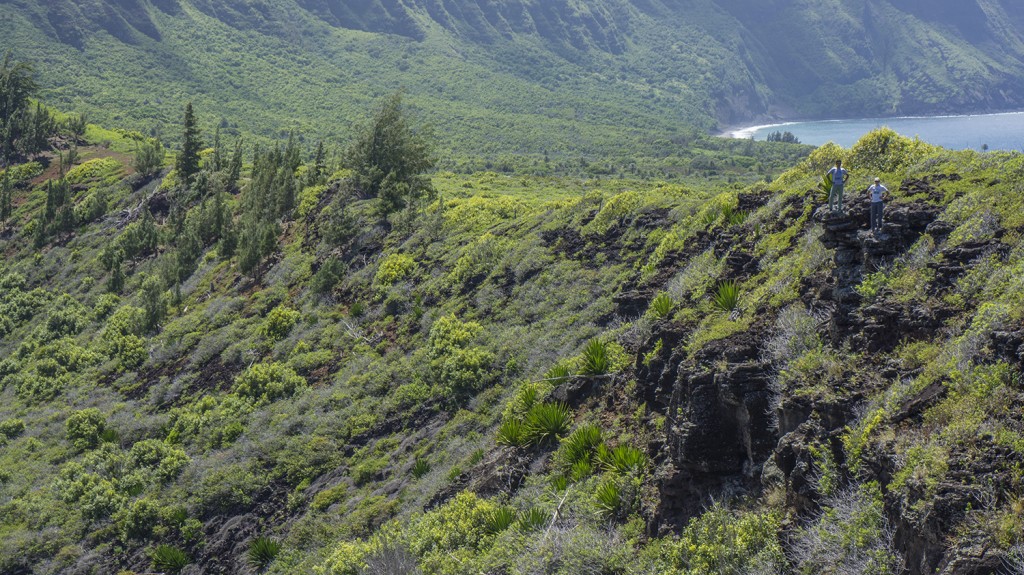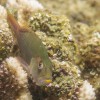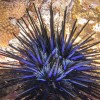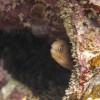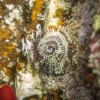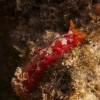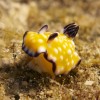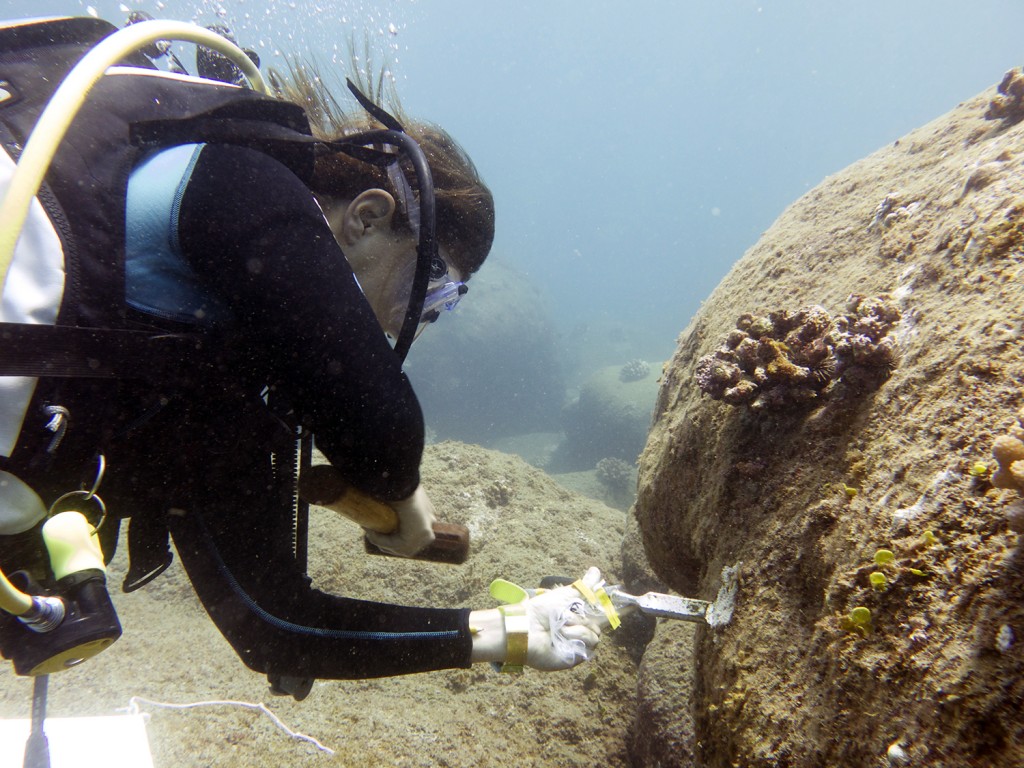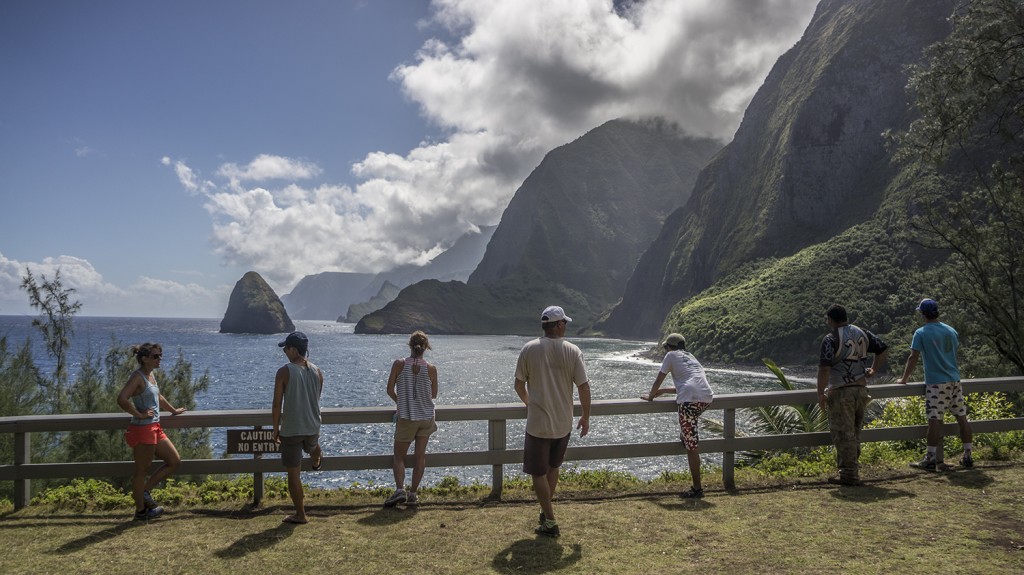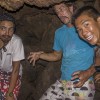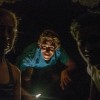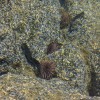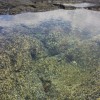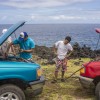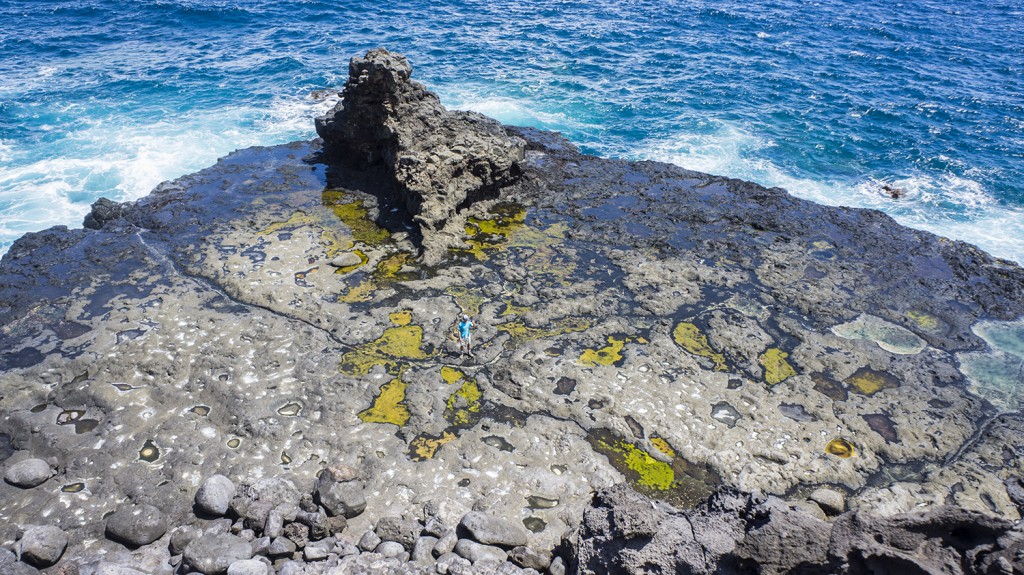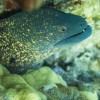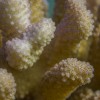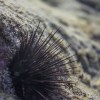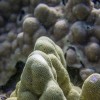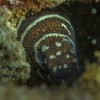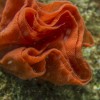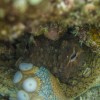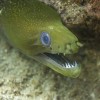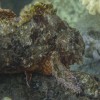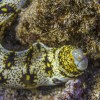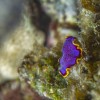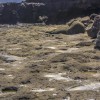My final week in Kalaupapa went by all too quickly. Sly, Raf and I spent the weekend hiking around the Kauhako crater rim and snorkeling in the harbor. We searched for ancient Hawaiian petroglyphs allegedly hidden along the crater rim (unsuccessful) and nudibranchs in the corals just outside the pier (much more so). After volleyball, we headed to the tiny settlement bar for a lively game of hearts with Uncle Pali.
Maggie Sogin, a PhD student from UH Manoa, joined us for the week. She’s studying coral metabolism in response to environmental stress, and is collecting coral samples from sites in Oahu and Kalaupapa. We spent the week helping her collect samples from twelve of her Kalaupapa sites. We needed all hands on deck since each sample had to be brought to the surface and immediately flash frozen to stop any metabolic activity. Otherwise, Maggie explained, she would just see the stress signal from sampling. Maggie collected two species of coral: six samples each of Pocillipora meandrina and Montipora capitata. She used wire cutters to snip the tips of Pocillipora and a hammer and chisel to remove chunks of Montipora. These samples are small, comparable to parrotfish bites, and are not overly harmful to the coral. She put each sample in a numbered plastic bag and handed it to Sly, who free dived to relay each sample to the boat. Randall and Eric operated the boat, recorded the time the samples were sent up, and immediately placed them in dry ice coolers. My job was to keep photographic data of each colony from which the samples were collected. I took pictures of a slate with the site and colony numbers, and then pictures of each colony. I placed a ruler with red, green, and blue tape next to each colony for scale and color correction. Maggie also retrieved temperature loggers she had placed at each site on a previous visit. An unseasonably early swell came through mid-week, making it tricky to position the ruler and get the colony in focus before getting swept away. I was impressed that Maggie was able to aim her hammer and chisel in the rolling surge!
Thanks to our experienced and efficient team, we finished all twelve sites despite some delays. On Tuesday, we had to wait for more dry ice to come in on the freight plane, but when we finished four sites that afternoon, we knew were in good shape. While waiting for the ice we took the opportunity to tag the seal pup Eric and I had spotted on our last seal walk. This one was smaller and less feisty, and Eric, Randall, and Sly tagged her in just over three minutes. On Wednesday the swell was too high to go out, so we caught up with on-land work. Sly, Maggie, and I buried temperature loggers by the sea turtle nests on the black sand beach and everyone worked on overdue data processing.
With our sites completed, I looked to make the most of my last weekend in Kalaupapa. I savored a delightful and delicious final movie night at Tim and Raf’s house (I’m still dreaming about Tim’s homemade lilikoi ice cream), and accompanied Eric on his monk seal watch. We discovered that pup #9, a male, had been weaned and would be ready for tagging the following week. Maggie’s boyfriend Pat and his family came to visit over the weekend, so Sly took us on another peninsula tour, with some bonus stops. In addition to the crater, arches, and Kalawao settlement, we went exploring in the Old Ladies’ Cave. It is said that during times of war between the Hawaiian Islands, the people of Molokai hid in this cave, but an enemy boat caught a glimpse of old ladies picking mites out of each others’ hair by the cave entrance and knew to attack. Other myths surrounding the cave involve scouts using the cave’s lava tube to send warning signals, or that one old lady used it to cook for her husband, and smoke rising from the lava alerted warring ships to the hidden Molokaians. We also climbed down the lava cliffs to check out some tidepools. Filled by occasional surf, the pools were full of urchins, some juvenile fish, and gobies. The gobies have specialized elongated tails that help them skip out of the water into neighboring pools. On the way home we were briefly stymied by a dead truck battery and worn-out jumper cables, but Raf saved the day with specialized car resuscitation know-how.
We all went for a last snorkel expedition in the harbor. The swell had calmed down, and we found countless eels, nudibranchs, and the rare titan scorpion fish. Sly spotted an octopus, and as Maggie and I crowded in to look a green moray darted out of a nearby crevice and lunged at it, hoping for an eight-legged meal. In a flash of suckers the octopus oozed deeper into the safety of its hole. Tim, Raf, and Sly also took us to one of their favorite salt collecting spots. Kalaupapa is famous for its sea salt, which dries in pools on the lava rocks. With spatulas and strainers, we scraped off the flaky crystals and brought home bags of saline souvenirs.
It was tough to leave Kalaupapa and all my wonderful new friends! Maggie, Pat’s family, and I crammed all of our gear into the tiny plane and said goodbye. As the plane took off, everyone standing at the airport sent us off with the wave, a Kalaupapa tradition. Thank you so much to Eric and Randall for working with me and coordinating my stay! Thanks also to Sly, Raf, Tim, Claire, Maggie, the Currys, and the entire Kalaupapa community for being so warm, welcoming, and generous. I hope to come back and visit soon!

